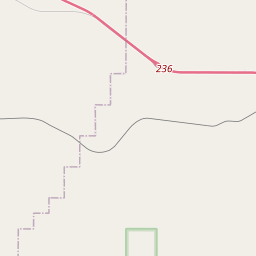Welcome to Dinosaur Country
Historical marker location:
505 2nd Avenue Northeast, Wibaux, Montana
( Marker can be reached from 2nd Avenue Northeast, aka Old Highway 10 near Log Cabin Road (County Road 7), on the left when traveling west.)







© OpenStreetMap contributors
Montana was the first state to elect a woman to Congress, Jeannette Rankin, who was elected to the U.S. House of Representatives in 1916. She was a pacifist and voted against the entry of the United States into both World War I and World War II.
About Wibaux County
Wibaux County Timeline
Wibaux County, Montana, located in the southeastern part of the state, has a rich history that dates back centuries. Before European settlement, the area was inhabited by Native American tribes, such as the Sioux and Cheyenne, who utilized the land for hunting and gathering. In 1806, the famous explorers Meriwether Lewis and William Clark passed through the region during their expedition.
The county itself was established on August 17, 1914, and named after Pierre Wibaux, an early pioneer and cattle baron. Wibaux, a Frenchman, came to Montana in the late 1800s and played a crucial role in the development of the region's ranching industry. His success in cattle ranching attracted many settlers to the area, leading to the founding of the county.
During the early years, Wibaux County experienced rapid growth due to the lucrative cattle industry. Railroads were built, bringing in more settlers and facilitating trade. The area quickly became a center for ranching and cattle auctions. However, the Great Depression of the 1930s had a significant impact on the county, causing economic hardships and mass migration.
In recent years, Wibaux County has focused on diversifying its economy beyond ranching. Tourism has become an important industry, with visitors attracted to the county's scenic landscapes, outdoor recreational activities, and historical sites. Today, Wibaux County continues to cherish its rich past while embracing the future with a resilient and resourceful community.
The county itself was established on August 17, 1914, and named after Pierre Wibaux, an early pioneer and cattle baron. Wibaux, a Frenchman, came to Montana in the late 1800s and played a crucial role in the development of the region's ranching industry. His success in cattle ranching attracted many settlers to the area, leading to the founding of the county.
During the early years, Wibaux County experienced rapid growth due to the lucrative cattle industry. Railroads were built, bringing in more settlers and facilitating trade. The area quickly became a center for ranching and cattle auctions. However, the Great Depression of the 1930s had a significant impact on the county, causing economic hardships and mass migration.
In recent years, Wibaux County has focused on diversifying its economy beyond ranching. Tourism has become an important industry, with visitors attracted to the county's scenic landscapes, outdoor recreational activities, and historical sites. Today, Wibaux County continues to cherish its rich past while embracing the future with a resilient and resourceful community.
Wibaux County Timeline
This timeline provides a concise overview of the key events in the history of Wibaux County, Montana.
- 1881 - Wibaux County was established on October 16, 1881, with Sidney as its county seat.
- 1883 - The Yellowstone River floods causing devastation in the county.
- 1887 - The town of Wibaux was founded by Pierre Wibaux and became the county seat in October.
- 1907 - The Milwaukee Road railway arrived in Wibaux County, bringing increased transportation and trade.
- 1914 - The town of Beach was incorporated in Wibaux County.
- 1916 - The county courthouse was constructed in Wibaux.
- 1937 - The Great Plains Blizzard struck Wibaux County, causing significant damage and loss of livestock.
- 1948 - The construction of the Intake Dam on the Yellowstone River began.
- 1962 - Wibaux County experienced severe flooding along the Yellowstone River.
- 1975 - Theodore Roosevelt Bridge over the Yellowstone River was completed.
- 1995 - Wibaux County celebrated its centennial anniversary.
- 2007 - The population of Wibaux County reached its peak at around 1,100 residents.